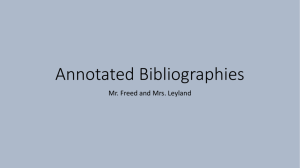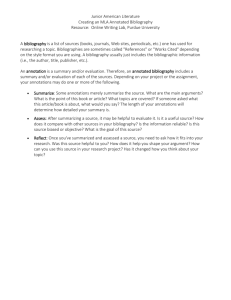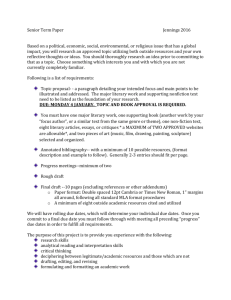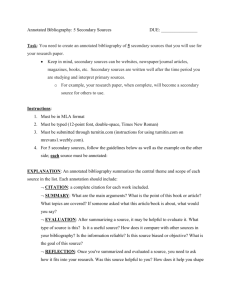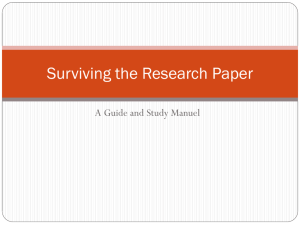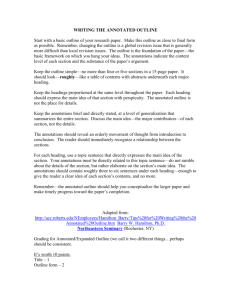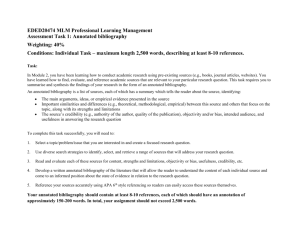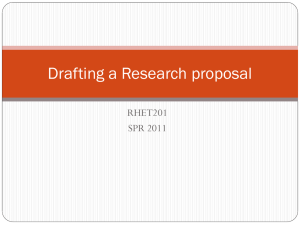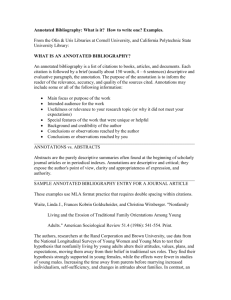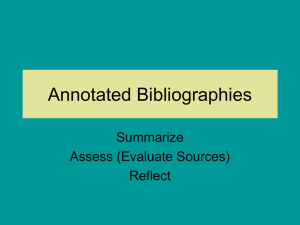APA Annotated Bibliography
advertisement
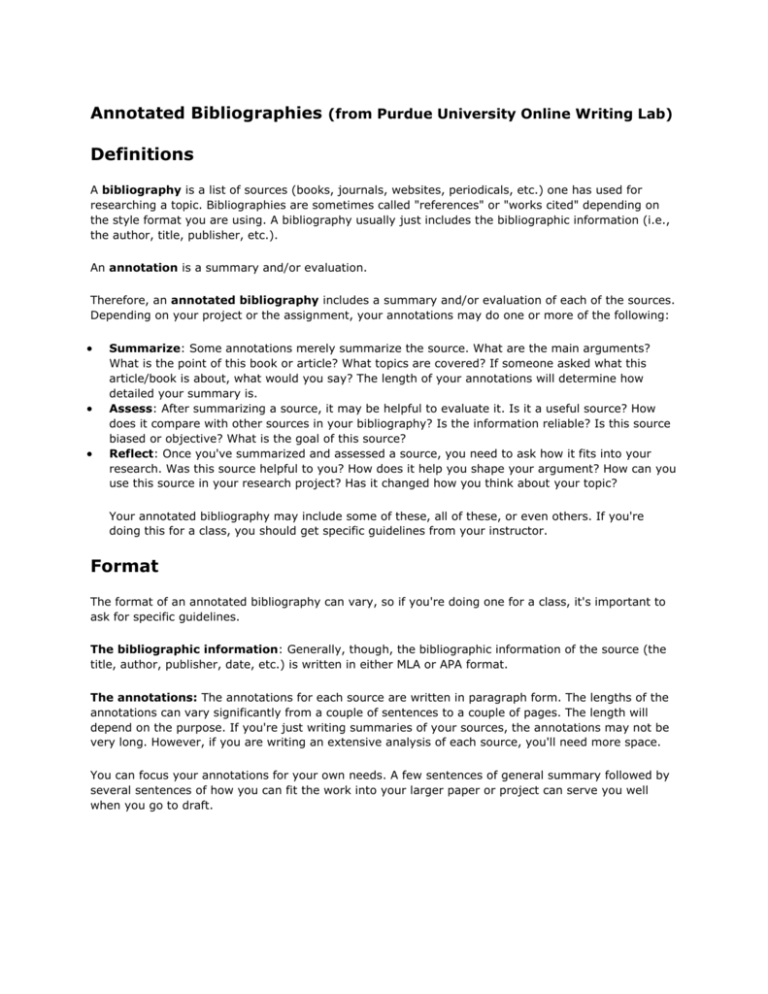
Annotated Bibliographies (from Purdue University Online Writing Lab) Definitions A bibliography is a list of sources (books, journals, websites, periodicals, etc.) one has used for researching a topic. Bibliographies are sometimes called "references" or "works cited" depending on the style format you are using. A bibliography usually just includes the bibliographic information (i.e., the author, title, publisher, etc.). An annotation is a summary and/or evaluation. Therefore, an annotated bibliography includes a summary and/or evaluation of each of the sources. Depending on your project or the assignment, your annotations may do one or more of the following: Summarize: Some annotations merely summarize the source. What are the main arguments? What is the point of this book or article? What topics are covered? If someone asked what this article/book is about, what would you say? The length of your annotations will determine how detailed your summary is. Assess: After summarizing a source, it may be helpful to evaluate it. Is it a useful source? How does it compare with other sources in your bibliography? Is the information reliable? Is this source biased or objective? What is the goal of this source? Reflect: Once you've summarized and assessed a source, you need to ask how it fits into your research. Was this source helpful to you? How does it help you shape your argument? How can you use this source in your research project? Has it changed how you think about your topic? Your annotated bibliography may include some of these, all of these, or even others. If you're doing this for a class, you should get specific guidelines from your instructor. Format The format of an annotated bibliography can vary, so if you're doing one for a class, it's important to ask for specific guidelines. The bibliographic information: Generally, though, the bibliographic information of the source (the title, author, publisher, date, etc.) is written in either MLA or APA format. The annotations: The annotations for each source are written in paragraph form. The lengths of the annotations can vary significantly from a couple of sentences to a couple of pages. The length will depend on the purpose. If you're just writing summaries of your sources, the annotations may not be very long. However, if you are writing an extensive analysis of each source, you'll need more space. You can focus your annotations for your own needs. A few sentences of general summary followed by several sentences of how you can fit the work into your larger paper or project can serve you well when you go to draft. ANNOTATED BIBLIOGRAPHY 2 Sample APA Annotation Annotated Bibliography Lamott, Anne. Bird by Bird: Some Instructions on Writing and Life. New York: Anchor Books, 1995. Print. Lamott's book offers honest advice on the nature of a writing life, complete with its insecurities and failures. Taking a humorous approach to the realities of being a writer, the chapters in Lamott's book are wry and anecdotal and offer advice on everything from plot development to jealousy, from perfectionism to struggling with one's own internal critic. In the process, Lamott includes writing exercises designed to be both productive and fun. Lamott offers sane advice for those struggling with the anxieties of writing, but her main project seems to be offering the reader a reality check regarding writing, publishing, and struggling with one's own imperfect humanity in the process. Rather than a practical handbook to producing and/or publishing, this text is indispensable because of its honest perspective, its down-to-earth humor, and its encouraging approach. Chapters in this text could easily be included in the curriculum for a writing class. Several of the chapters in Part 1 address the writing process and would serve to generate discussion on students' own drafting and revising processes. Some of the writing exercises would also be appropriate for generating classroom writing exercises. Students should find Lamott's style both engaging and enjoyable. McIvor, S. D. (1995). Aboriginal women's rights as "existing rights." Canadian Woman Studies/Les Cahiers de la Femme 2/3, 34-38. ANNOTATED BIBLIOGRAPHY 3 This article seeks to define the extent of the civil and political rights returned to aboriginal women in the Constitution Act (1982), in its amendment in 1983, and in amendments to the Indian Act (1985). This legislation reverses prior laws that denied Indian status to aboriginal women who married non-aboriginal men. On the basis of the Supreme Court of Canada's interpretation of the Constitution Act in R. v. Sparrow (1991), McIvor argues that the Act recognizes fundamental human rights and existing aboriginal rights, granting to aboriginal women full participation in the aboriginal right to self-government.
